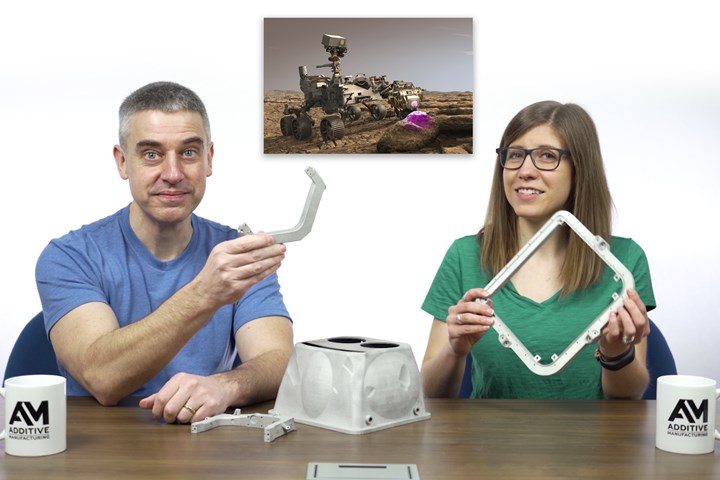Cool Parts In Space!
The Cool Parts Show has long had a fascination with AM for space. Revisit some of our episodes to find out what AM brings to the final frontier.
Share
Read Next

Additive technology is on the forefront of manufacturing advancement, and space exploration has always been an early adopter of advanced engineering methods. The confluence of these worlds is showing early signs of pushing the envelope of each. Human ingenuity knows no bounds, not even those of gravity.
Over the past few seasons of The Cool Parts Show, we have studied some of the ways that 3D printing technology is assisting in efforts to leave Earth and explore our solar system. For our stargazers, aerospace techs and anyone that wanted to be an astronaut when they grew up, here are just a couple of the ways that additive is boldly going where only a few men and a couple of robots have gone before.
The Broadsword engine is a reusable rocket engine for repeated trips to the moon. It can do missions in rapid sequence with very little service in between. The engine is made of only three parts, and is much lighter than a traditional rocket engine.
But maybe you think the moon is old hat; well, how about Mars? The Perseverance rover that is currently roving around the red planet in service of science carried with it several 3D printed parts. NASA engineers had to design these components without considering how they might be made. The resulting manufacturing process demanded not just 3D printing, but also a sequence of postprocessing steps including chemical milling.
Of course, we also started this whole thing off talking about space. Our very first episode took a look at a rocket fuel injector built using ultrasonic additive manufacturing, a type of sheet lamination. The solid-state metal AM process (no high heat, no melting) made it possible to build a solid part to contain a motor without harming the motor during the build.
Related Content
-
Sciaky Manufactures Critical EBAM Component for Intuitive Machines’ Moon Landing
The Sciaky engine component was the upper section of the IM-1 lander’s main engine nozzle, which provided the main source of thrust for descent in the February 2024 mission to the Moon.
-
3D Printed NASA Thrust Chamber Assembly Combines Two Metal Processes: The Cool Parts Show #71
Laser powder bed fusion and directed energy deposition combine for an integrated multimetal rocket propulsion system that will save cost and time for NASA. The Cool Parts Show visits NASA’s Marshall Space Flight Center.
-
Will the Successes of NASA’s RAMFIRE Project Lead to an Operational Aerospike Engine?
NASA’s RAMFIRE project has additively manufactured a 36-inch diameter aerospike nozzle with complex integral coolant channels for a more efficient way to propel rockets to outer space. NASA engineers will use this as a proof of concept to inform future component designs.










